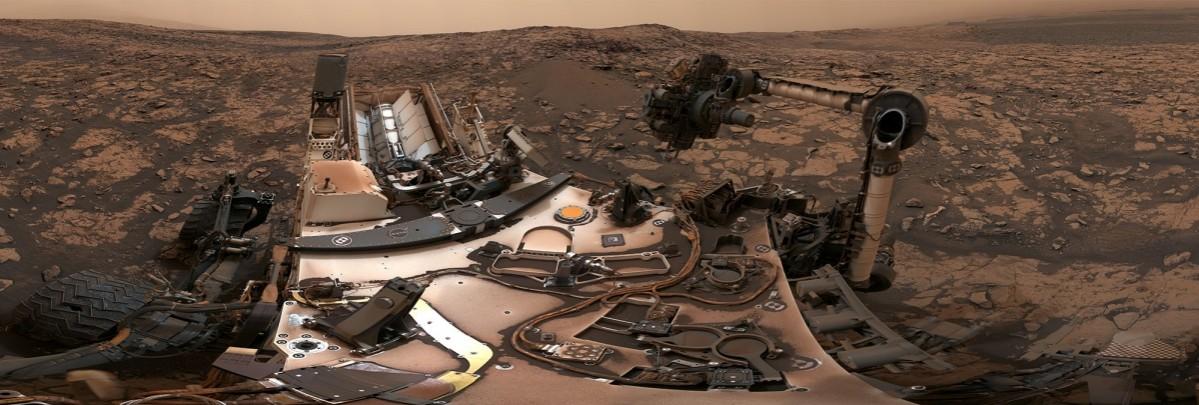NASA's Curiosity rover, exploring Mount Sharp, a 5-mile-tall mountain within the basin of Gale Crater on Mars, was able to capture a panormaic view of the region.
Curiosity's Deputy Project Scientist, Abigail Fraeman of NASA's Jet Propulsion Laboratory in Southern California, has given viewers a descriptive tour of Curiosity's location. The panorama was captured by the rover's Mast Camera, or Mastcam, on July 3, 2021, the 3,167th Martian day, or sol, of its mission, it said.
Curiosity landed nine years ago on August 5, 2012, with a mission to study whether different Martian environments could have supported microbial life in the ancient past, when long-lived lakes and groundwater existed within Gale Crater.

The terrain around the Curiosity rover is beginning to look very different, as the rover moved over 16 miles since landing in Gale Crater in 2012. This view is from 1500 feet above our landing site. "We're climbing the side of Mount Sharp, a very tall mountain in the center of the crater," said the JPL team monitoring it from the ground control on Earth.
"All of this dark material is Martian sand that's made up of broken bits of volcanic rock. Can you see the ripples that were shaped by the wind? We had to drive around this massive sand sheet as we climbed Mount Sharp."
"Look how clear the air is. That's because it's winter when there's less dust in the atmosphere. You can see all the way to the rim of Gale Crater, which is about 20 miles away. We spent the last several years investigating clay-rich rocks that formed in lakes.
But now we're entering a region where rocks are filled with salty minerals called sulfates. These minerals form in drier conditions. So we think this area might show us how the ancient Martian climate was changing. We're starting to see lots of very cool, knobbly textured rocks like these.
We think these veins and nodules were created by groundwater. Here we recently drilled our 32nd sample of the mission. By studying the chemicals and minerals in this rock, we can learn how the ancient environment was changing as we go from the clay region into the sulfate region.
And these hills are different from anything we've seen on the lower mountain. They're rounded unlike the ridges and mesas we've seen before. Now let's look ahead to where we're going. We'll soon be entering a narrow valley that should make for some amazing images.
On the left is Rafael Navarro Mountain, named after one of the mission scientists who passed away in January of 2021. This nearby hill is huge. It's about the size of a four story building. This changing terrain is more than just fun to look at.
It can teach us how Mars lost its water over time. How long did conditions that were favorable to life last? We're looking forward to finding out."












!['Had denied Housefull franchise as they wanted me to wear a bikini': Tia Bajpai on turning down bold scripts [Exclusive]](https://data1.ibtimes.co.in/en/full/806605/had-denied-housefull-franchise-they-wanted-me-wear-bikini-tia-bajpai-turning-down-bold.png?w=220&h=138)
![Nayanthara and Dhanush ignore each other as they attend wedding amid feud over Nayanthara's Netflix documentary row [Watch]](https://data1.ibtimes.co.in/en/full/806599/nayanthara-dhanush-ignore-each-other-they-attend-wedding-amid-feud-over-nayantharas-netflix.jpg?w=220&h=138)



